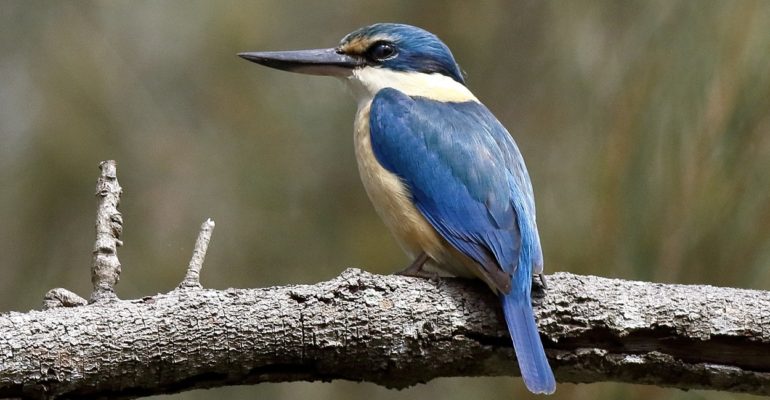
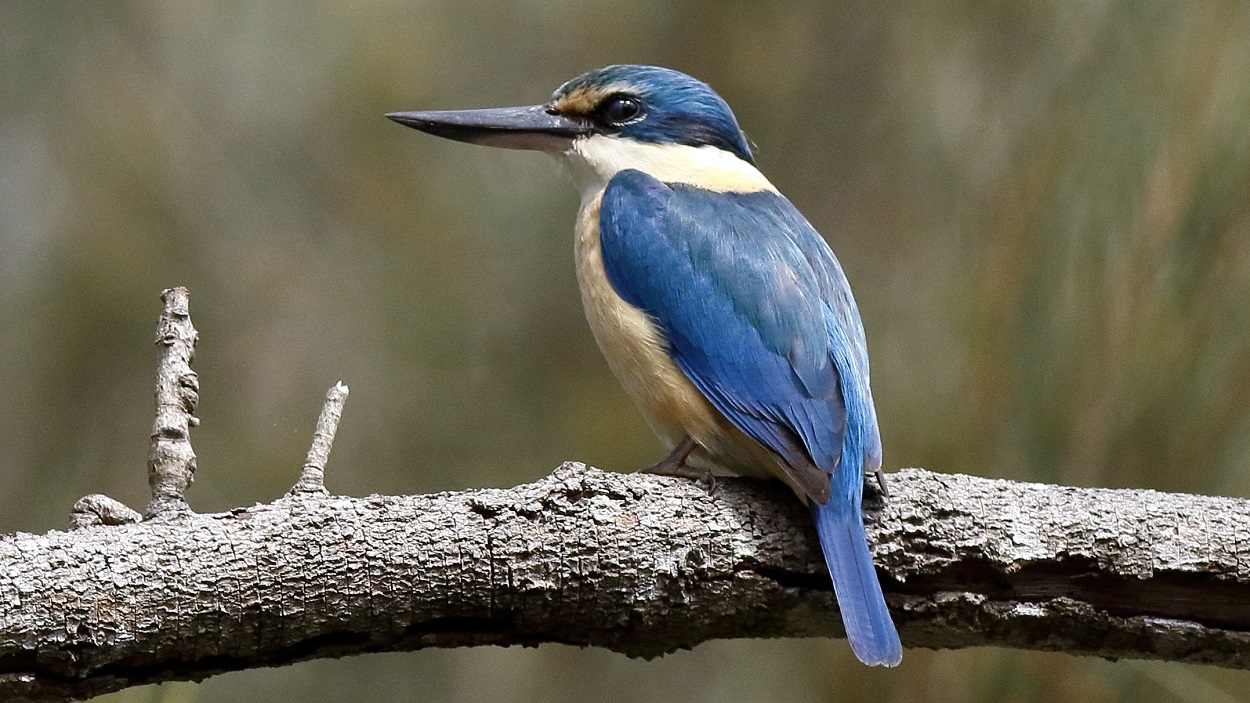
Sacred Kingfisher – one of four kingfisher species found in the Redlands Photo: Chris Walker birds
At the end of 2016, a group of dedicated volunteers successfully secured a Community Conservation Grant from Redland City Council to develop a brochure for the city that would showcase the best places for watching birds in the diverse habitats of the Redlands.
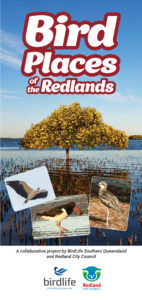
This brochure is available at Indigiscapes
In late 2016, work began researching and visiting the numerous potential sites in the city that would deliver the right balance of bird diversity, presence of special birds and all ‘round enjoyable nature experiences.
Bird Places of the Redlands is the product of a team of dedicated BirdLife Southern Queensland members and staff of Redland City Council. The full colour glossy brochure outlines the locality, facilities and birds of more than 40 sites, covering the mainland, North Stradbroke Island and the Southern Moreton Bay Islands.
The brochure is a wonderful illustration of how much the city has to offer the budding or avid birdwatcher and nature seeker. Additionally, the brochure is an asset to the city for attracting international birdwatching tourists to the region. British and North American birders travel to Australia in search for many of the bird species to be seen in the Redlands.
Most birders also enjoy a lovely café visit after a busy morning birding as well as making use of accommodation providers in the region. Research also suggests birdwatchers have some of the highest per-capita spend of any nature-based tourists.
As a coastal city, shorebird habitats feature prominently, giving people the information they need to view these special birds, many of which travel to the region from far flung parts of the northern hemisphere on their annual migration during Australia’s summer months.
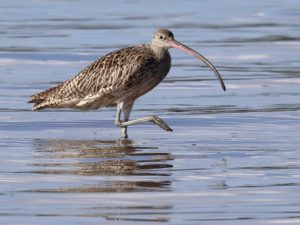
Eastern curlew at Oyster Point near Toondah Harbour – Photo: Chris Walker
Toondah Harbour, a site currently under threat from development that will result in removal of a portion of the Ramsar listed Moreton Bay Marine Park, is given its due acknowledgement as key habitat for these special birds. One species, the Eastern Curlew, is Australia’s largest migratory shorebird, and was up-listed to Critically Endangered in 2015 on the Environment Protection and Biodiversity Conservation Act (1999).
The Redlands, including Toondah, provides important habitat for this and other species that rely on the intertidal flats as foraging grounds – giving the nourishment required before and after their journey through the East Asian Australasian Flyway.
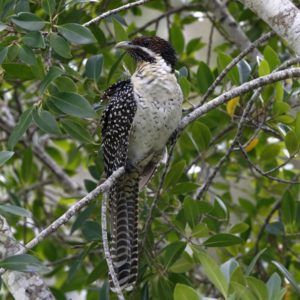
Eastern koel female in Henry Ziegenfusz Park Photo: Chris Walker
It is not just shorebirds to be found by using the Bird Places of the Redlands brochure though!
The city also boasts some special reserves of quintessential Aussie bush – or eucalypt forest. Just as koalas love our gum trees, so too do our birds. The diversity of species one can see at Bayview Conservation Area or even Henry Ziegenfusz Park will satisfy most birders hunger for Australia’s special birds.
It is worth visiting these and other sites at different times of the year as well; giving nature seekers the opportunity to appreciate how the Redlands bird-scape changes with the seasons.
Winter brings an abundance of nomadic honeyeaters in search of flowering gum trees, while summer is a great time to have encounters with migrant cuckoos that visit us each year from New Guinea and South East Asia, including the Channel-billed Cuckoo with its horrendous squawk of a call and the haunting sounds of the Eastern Koel, also known as the stormbird.
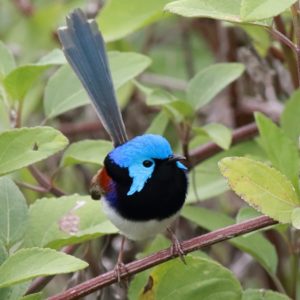
Variegated Fairywren male Photo: Chris Walker
Year round favourites to look out for across the city are the three species of Fairywrens found in South East Queensland.
The Variegated, Red-backed and Superb Fairywrens are always exceedingly popular among birders and non-birders alike.
Many of the sites in Bird Places of the Redlands have resident families of these sweet birds, whose males sport some truly beautiful plumage when breeding and can be found anywhere there is adequate shrubby understorey.
The brochure was officially launched at IndigiScapes, where the event was attended by numerous bird and nature lovers from across the city as well as Redland City Councillors Paul Bishop, Wendy Boglary and Tracey Huges.
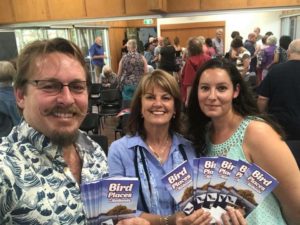
Launching the brochure in late 2017 – Crs Paul Bishop and Wendy Boglary with Dr Rochelle Steven
The brochure represents a positive example of how inspirational the city’s biodiversity values can be for residents and visitors to the Redlands alike.
So, next time you are lost for something to do close to home, why not grab a copy of the brochure from IndigiScapes and head out on the search for some birds!
Take some binoculars with you, to help with identification and discover the joy birdwatching can bring to your life. You will never look at the Redlands the same again!
Dr Rochelle Steven, BirdLife Southern Queensland
Please note: Offensive or off-topic comments will be deleted. If offended by any published comment please email thereporter@redlands2030.net
4 Comments
Well to moved to Thornlands 2 + years ago and to my surprise have have heard a Power full Owl calling its mate and seen one ,in bushland accross from my new house , Is there any Group monstering these birds in Redlands .
At Thornlands, Sunday 3rd April, 2022 at 5.30pm… I am hearing a Currawong.
Is it available in other places besides Indigiscapes?
Thank you for these beautiful photos. Living in Capalaba, never see any of the colourful birds shown here. I always have wild bird seed on hand so have the pleasure of seeing birds in my front yard. A pair of galahs have been coming for past two decades, sometimes with others visiting, lorikeets are many, screeching corellas, and a pair of cockatoos that don’t appear to be wild at all…as if I haven’t filled the seed tray in the morning, one will let me know, and won’t move aside while I’m there. There are also crested pigeons that once in a while, one ends up in jaws of a neighbour’s cat.
I’m also feeding a possum/s fruit and now and then spot one in tree surprised one was there one evening this week, extended a banana, quickly taken and consumed. A family of plovers live end of street in the park, and knowing they are there, my dog won’t get out of the car while watering plants. It’s good to know that in a built up area, we still hear and see wildlife provided their habitat is valued as sadly in Capalaba, we have lost our koalas along Coolnwynpin Creek corridor that once travelled through TAFE grounds to trees planted by KAG in the park and into trees behind my neighbour then into two eucalypts in my backyard. Cluster of tall majestic koala food trees officially listed as protected in Council records end Ingham St were destroyed for what appears to be a ghetto providing developer with maximum profits, where some residents still mourn loss of our much loved marsupial.